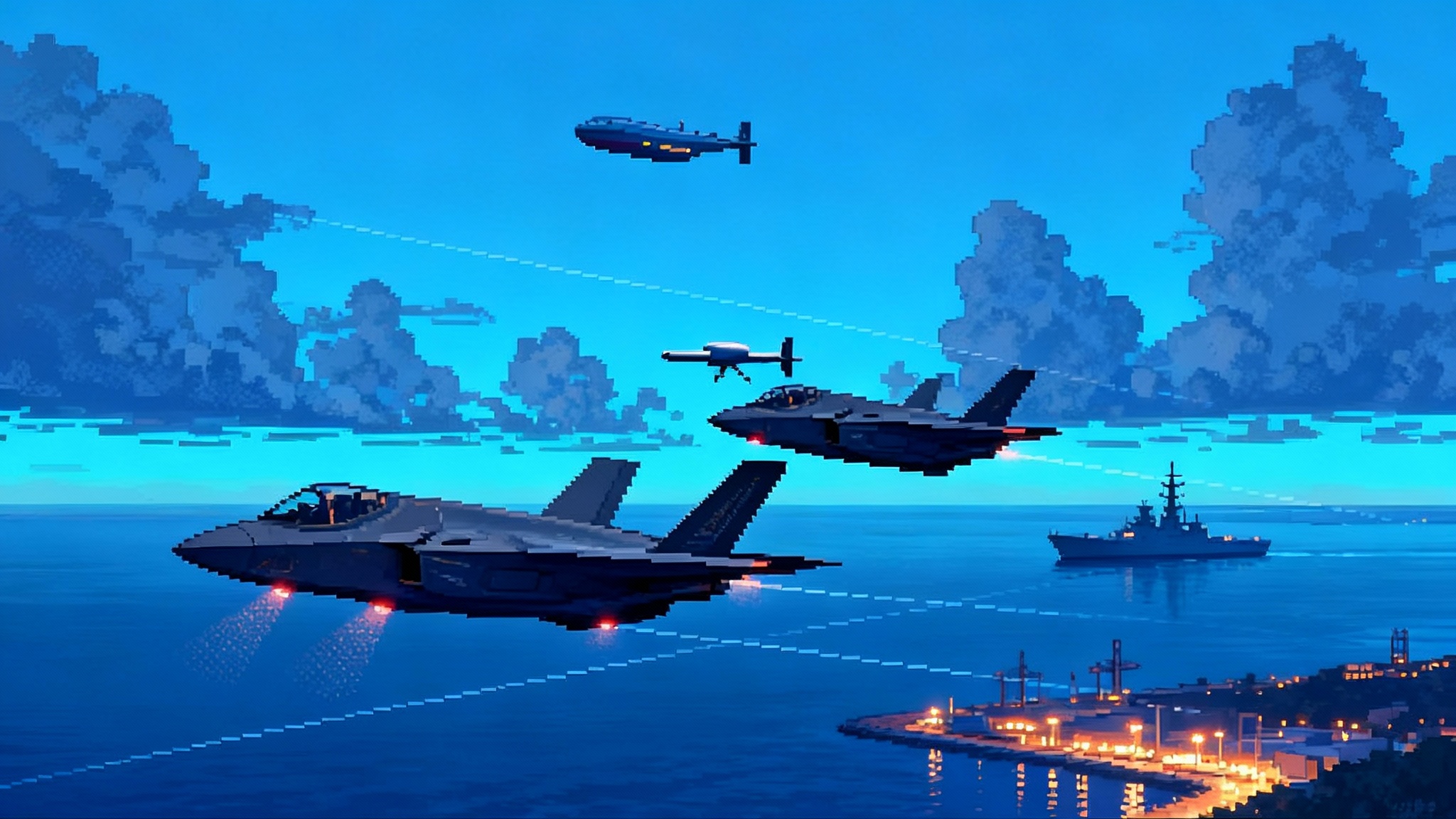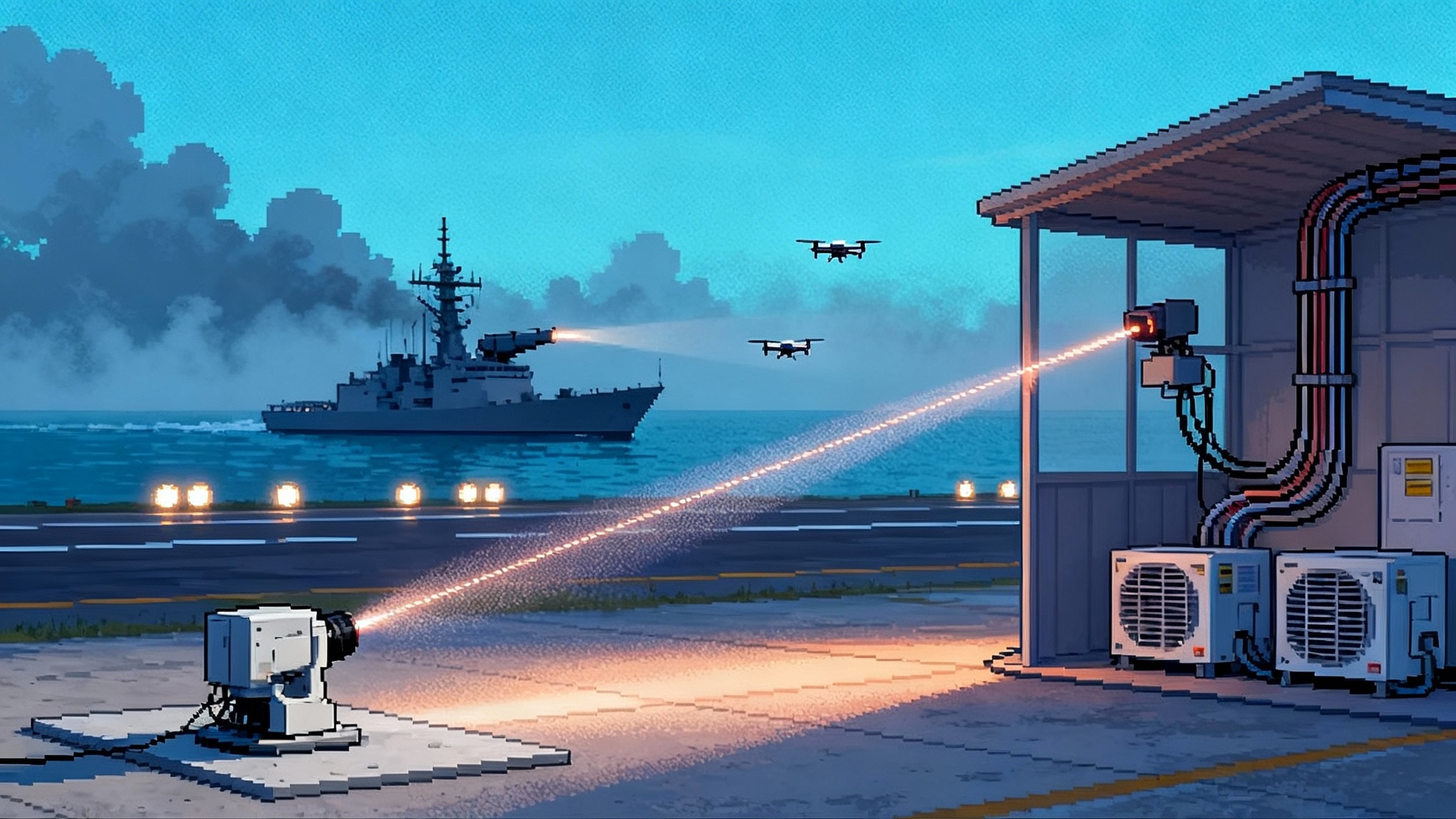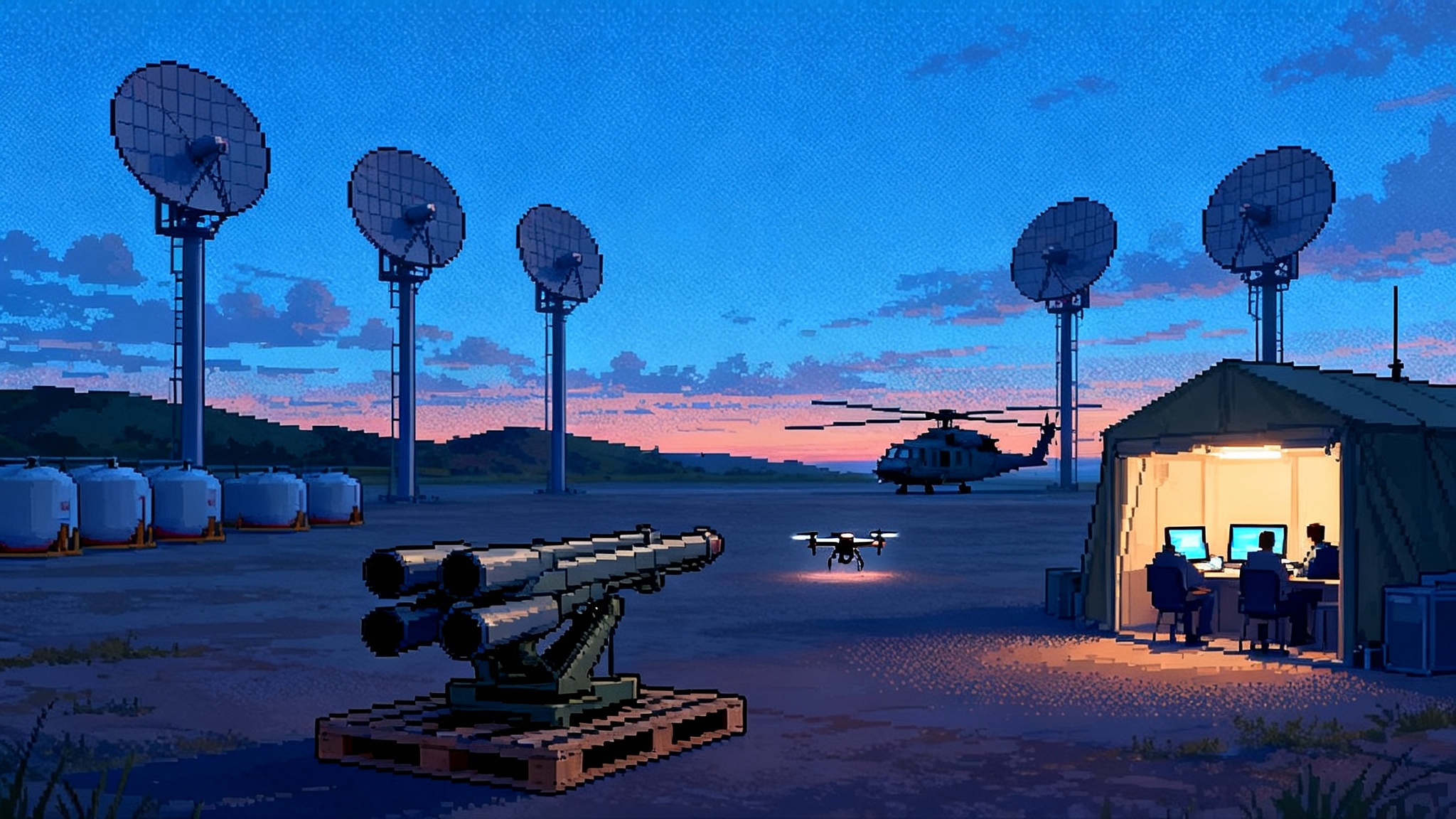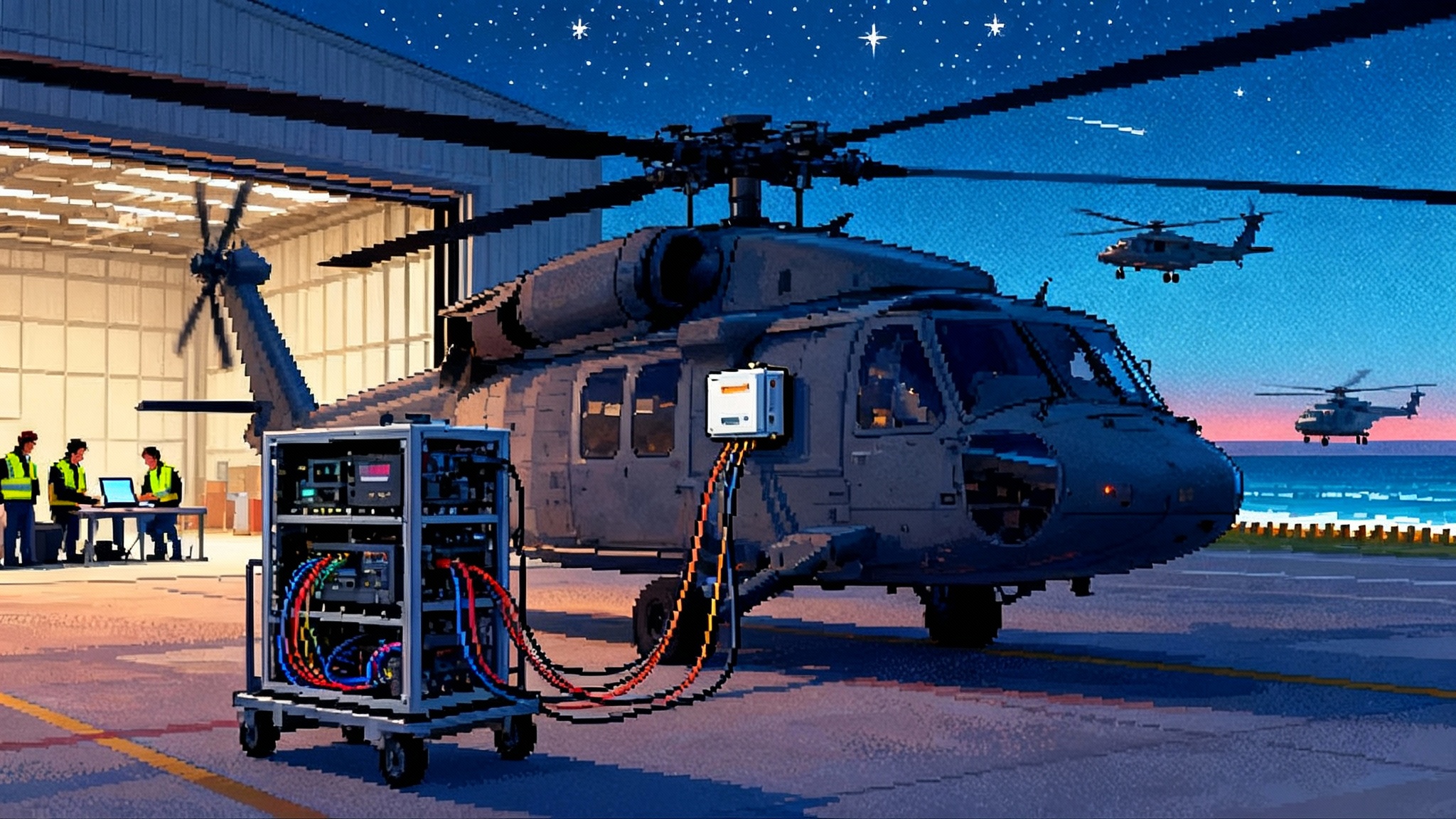JATM Arrives: AIM-260 and the New Playbook for Air Combat
The AIM-260 Joint Advanced Tactical Missile is moving from secrecy to squadrons. Here is what 2025 tests and FY26 procurement really signal, and how F-22, F-35 and Collaborative Combat Aircraft will fight differently through 2030 without breaking the budget.
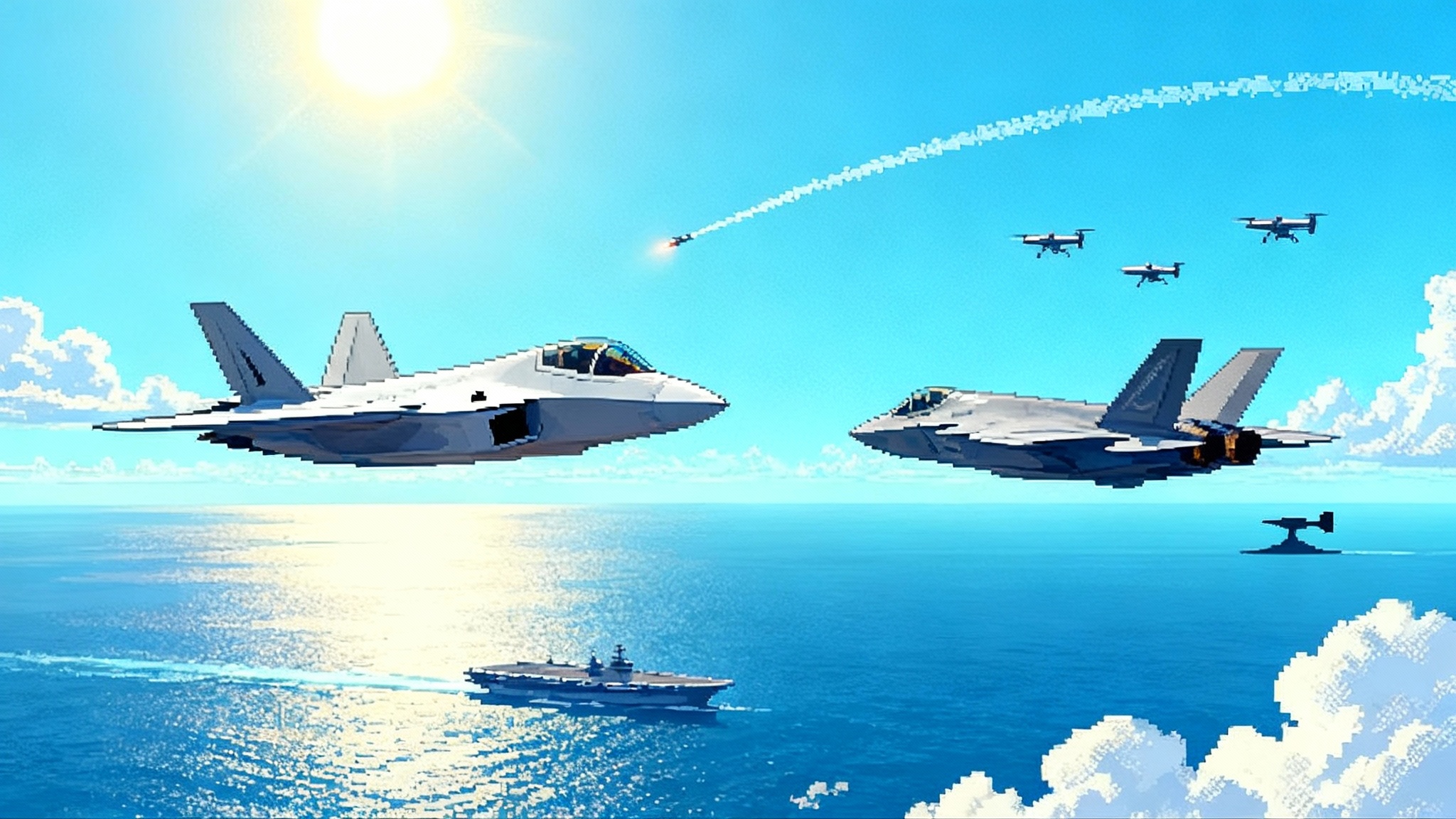
The quiet reveal becomes real
For years the Joint Advanced Tactical Missile sat behind the velvet rope. In 2025, the rope finally moved. Test squadrons acknowledged live-fire work, and the Navy publicly released a rendering that matched what engineers have hinted at for years. The outline is telling. AIM-260 keeps an AMRAAM-sized form factor so it fits inside the F-22 and F-35 weapon bays, but it trades the AMRAAM’s mid‑body fins for a cleaner body and a larger motor section. That is the easy part to see. The hard part is the point: AIM-260 is designed to give U.S. fighters the first credible long-reach shot against the toughest targets while staying stealthy and connected.
In parallel, test breadcrumbs in early 2025 confirmed what program watchers suspected. The missile is no longer a science experiment. Captive carries and separation testing gave way to live shots, with operational test units involved. None of this yields range numbers or seeker waveforms. It does yield a shift in posture. A program that once whispered now speaks in budget lines.
FY26 is when procurement starts in public
The Fiscal Year 2026 justification books are the first place AIM-260 shows up in a way ordinary readers can audit. The Air Force requests roughly 368.6 million dollars on its Joint Advanced Tactical Missile line in Missile Procurement for FY26, with additional details classified. The Navy’s books add about 309 million dollars to begin procurement on its side. Dollar figures without quantities are both normal and intentional for a black program at this phase. The message is still clear. Two services are buying the first production rounds, with integration on F-22 and F-35 already planned into their upgrade roadmaps.
The second part of the signal is what happens around those lines. The Navy trims FY26 AIM‑120 buys to a few dozen missiles while calling inventories critically low, which looks contradictory until you zoom out. If a new long-range round is entering the fleet and AMRAAM’s latest D‑3 variant remains in heavy foreign demand, you prioritize the unique capability first and fill in AMRAAMs as funding and industry capacity allow. On the Air Force side, AMRAAM continues in meaningful quantities in FY26. That illustrates the near-term reality. JATM will be the tip of the spear; AMRAAM remains the spear shaft for depth and affordability.
What changes from 2026 to 2030
From 2026 onward, the missile is not just a better dart. It rewrites the playbook that surrounds the dart. Four shifts stand out.
-
Range becomes tactically usable, not just a brochure claim. Longer reach only matters if you can hold a track long enough to guide a weapon to endgame. The F-22’s and F-35’s sensors, fused with offboard data from E‑7 Wedgetail, the Aegis enterprise, and proliferated sensors on crewed and uncrewed aircraft, make that track continuity realistic against high-value targets. JATM’s form factor preserves stealth carriage, so fifth‑generation fighters can take that first shot without lighting themselves up.
-
Shooter and sensor decouple by default. The unit that sees does not need to be the unit that fires. In practice, a clean F‑35 at altitude can generate target-quality tracks while a low‑observable F‑22 or a missile-carrying Collaborative Combat Aircraft takes the shot from a different bearing. That geometry complicates enemy survivability math and helps defeat kinematic and electronic countermeasures.
-
Salvos become mixed and layered. A 2030 engagement will often include at least two weapon types from multiple platforms. JATM leads against the most valuable or most distant target. AIM‑120D‑3 tails the shot, timed to arrive when the defender has spent energy and decoys. Short-range weapons and electronic attack shape the merge if it happens at all. Think of it as a relay team rather than a single sprinter.
-
Logistics drives tactics. Every JATM will cost more than an AMRAAM. That makes shot discipline essential. Expect tactics, techniques, and procedures to formalize target sets worthy of a JATM shot and to default to AMRAAM for anything below that threshold. Training and weapons school syllabi will stress criteria like probability of kill uplift, enemy asset value, and re‑attack feasibility.
F‑22 loadouts and tactics
The F‑22 is the first U.S. Air Force platform integrated with JATM, and it will exploit the missile most aggressively. The Raptor’s main bay holds AMRAAM-class rounds in six‑pack configuration and its side bays hold two short‑range missiles. Because AIM‑260 matches AMRAAM’s envelope, the Raptor preserves its stealth loadout count. That means six JATMs internal plus two AIM‑9X in the side bays for a pure air‑dominance sortie, or a 4‑plus‑2 mix if a mission commander wants to keep a pair of AMRAAMs for medium‑range shots and training parity.
Tactically, expect more two‑circle engagements in the electromagnetic sense, not the dogfighting sense. One F‑22 pair will quietly build tracks and sort targets while a second pair offsets to create crossing shots at long range. The Raptor’s low probability of intercept radar, combined with passive targeting and offboard updates, will keep launch cues sparse on enemy radars. When JATM goes active late in flight, the defender has already burned options.
F‑35 loadouts, Sidekick, and the stealth trade
The F‑35’s internal carriage is the driver of its tactics. In stealth configuration, a Block 4 F‑35 can carry four AMRAAM-class weapons internally. The Sidekick modification adds two more internal stations in the bay for AMRAAM‑sized weapons, growing that internal loadout to six. Because AIM‑260 is built to the AMRAAM envelope, Sidekick becomes doubly important for JATM. Six internal JATMs on a stealthy F‑35 patrol changes the air picture for an entire sector. For a deeper look at what Block 4 and TR-3 unlock, see what the Block 4 era really unlocks.
Where Sidekick is not yet fielded or the mission calls for external pylons, units will use a blended approach. The cleanest option is four JATMs internal for stealth and a pair of external AIM‑9X for closer work when survivability and threat density allow pylons. In pacing-threat scenarios, commanders will keep the jet clean and rely on formation partners or CCAs to carry the extra missiles.
Pairing with Collaborative Combat Aircraft
Collaborative Combat Aircraft turn JATM from a fighter’s weapon into a formation capability. Two models matter between 2026 and 2030. First are magazine carriers. A CCA optimized for payload can lug four to eight AMRAAM-class rounds. Park two of them 60 to 100 miles forward of a fighter CAP, and you create a movable picket line. Fighters provide the sensing and authorities, the CCAs provide the salvos. Second are skirmishers. A faster, more agile CCA can probe for the enemy’s sensors, soak up attention with expendables and electronic attack, and force an opponent into a defensive posture long enough for the formation to loft JATMs from a clean bearing.
Commanders will experiment with a few repeatable plays:
- Remote carry: a CCA flies as a missile truck under the control of a nearby F‑22 or F‑35. The fighter pushes targeting data and employment commands; the CCA handles the launch and initial guidance before handing off to the weapon.
- Bracket and beam: two CCAs fly offset at 30 to 60 miles laterally from the fighter element. When the hostile package turns to address one CCA, the opposite side fires. The geometry forces the defender to split attention or accept a tail‑aspect terminal problem.
- Radar quiet, network loud: fighters remain passive, CCAs radiate and jam. The formation still retains a high‑quality track through shared data, but only the CCAs present as emitters.
Because CCAs will be bought in numbers and built for easier refresh, they help contain costs. A formation can husband JATMs on crewed jets and let CCAs spend the first salvos of AMRAAMs, reserving JATMs for high payoff targets.
AMRAAM inventories and the new division of labor
JATM’s arrival does not end AMRAAM. It clarifies its job. The FY26 books show the Air Force buying hundreds of AMRAAMs and the Navy buying far fewer while both services start JATM procurement. Two things explain this. First, allied demand for AMRAAM remains extraordinary, and that demand sustains high production rates. Second, AMRAAM’s D‑3 refresh brings meaningful improvements in range and electronic protection at a lower unit cost than a JATM.
The practical implication from 2026 to 2030 is a two‑tiered magazine. JATM is the high‑end shot for long‑range kills or against the most valuable targets like airborne early warning, tankers, and specialized strike assets. AMRAAM covers the bulk of beyond‑visual‑range engagements, especially where range rings overlap or where a defender may already be cold and running. Units will codify thresholds for firing a JATM versus an AMRAAM so the default choice is economical unless the tactical problem demands the premium round.
The industry ramp, warts and all
Lockheed Martin must stand up a new production flow for AIM‑260 while the broader munitions sector wrestles with rocket motor bottlenecks and supplier consolidation. Aerojet Rocketdyne’s role in solid motors remains central across U.S. missiles, and qualifying additional motor lines is slow by design. That is why early JATM procurement is dollars without public quantities and why the services keep AMRAAM buys healthy. The worst outcome would be a fixed‑capacity swap where the new weapon simply displaces the old one one for one. The better outcome is dual‑track production where AMRAAM rides its mature supply chain and JATM grows into volume as motor and electronics suppliers add capacity. Many of the fixes are the same ones driving the 2025 factory surge automation.
Program managers have three levers between now and 2030:
- Multi‑source critical parts where possible, especially seekers and propulsion energetics. Even if the second source starts with subassemblies, it adds resilience.
- Invest early in test equipment and inspection throughput. In 2024 and 2025, missile makers doubled output on several lines by attacking bottlenecks in test cells and acceptance stations. JATM should bake those lessons in from day one.
- Phase software and hardware builds. A useful Build 1 missile on time beats a perfect Build 3 missile that arrives two years late. Early blocks can prioritize range and reliability, with later blocks adding seeker modes or more sophisticated networking.
How allies plug into the kill‑web without a cost spiral
JATM will be tightly held at first. Most U.S. allies will fight alongside it before they field it. The smart move is to plug into the network, then grow into the new missile when exportability permits.
Here is a practical playbook for 2026 to 2030:
- Buy depth in AMRAAM D‑3 while it is hot. The D‑3 refresh yields range and resilience improvements that matter in the same fight where JATM appears. Stockpiles turn into deterrence only when they are deep.
- Invest in the connective tissue. Link 16 remains the coalition backbone. E‑7 Wedgetail and ground nodes fuse the air picture. Aegis and cooperative engagement pathways extend air‑to‑air awareness far beyond any single cockpit. If you can hold a track, you can participate in a JATM kill chain even if your jet fires an AMRAAM, as seen when destroyers join the US kill web.
- Prepare the bay and the brain. For F‑35 users, keep Block 4 software current and plan the Sidekick hardware path so internal carriage of six AMRAAM‑class weapons is available. For legacy fleets, add modern infrared search and track pods and network gateways so they can serve as trackers and handoff nodes.
- Treat CCAs as the affordability valve. Not every partner will buy CCAs at U.S. scale, but several will field attritable drones that can scout, jam, or carry a pair of AMRAAMs. Even a modest CCA detachment lets a squadron reserve expensive shots for the right moment.
- Codify shot discipline. Write and exercise doctrine that assigns the premium missile to premium targets with clear rules of engagement. The cost spiral starts when premium becomes routine.
Finally, run the numbers on training. Live shots are essential but scarce. Use high‑fidelity digital twins and instrumented ranges so crews practice the full JATM kill chain at scale. The cheapest interceptor is the one you did not waste because your crews already rehearsed the geometry.
What to watch in 2026
Three milestones will tell readers how fast the future arrives.
- First operational carriage in squadron service. When a frontline F‑22 or F‑35 publicly carries AIM‑260 on a named deployment, you can assume tactics are leaving the schoolhouse.
- CCA first flights and early detachments. As Anduril and General Atomics mature their air vehicles, look for Air Force plans to stand up the first readiness unit and for detachments to work with F‑35 squadrons on Northern Edge, Red Flag, or similar exercises. When CCAs begin to fly real vignettes with fighters, the magazine math changes.
- Industrial friction or flow. Watch rocket motor qualification news and production line investments. If more motor capacity comes online and acceptance test throughput expands, JATM quantities will climb and unit costs will fall.
The bottom line
AIM‑260 is not a bigger AMRAAM. It is a new center of gravity for air superiority. The 2025 disclosures and FY26 procurement lines mark the turn from secrecy to service. From 2026 to 2030, U.S. tactics will stretch the air battle, split sensors from shooters, and lean on CCAs to add magazine depth. AMRAAM will carry the everyday load while JATM makes the high‑value kills that decide the fight. Allies will plug into the kill‑web through sensors, software, and discipline before they ever touch the new missile. If program leaders protect production ramp‑ups and squadrons protect shot discipline, the next decade of air combat will be defined less by who fires first and more by who keeps the network alive long enough for the best shot to matter.
